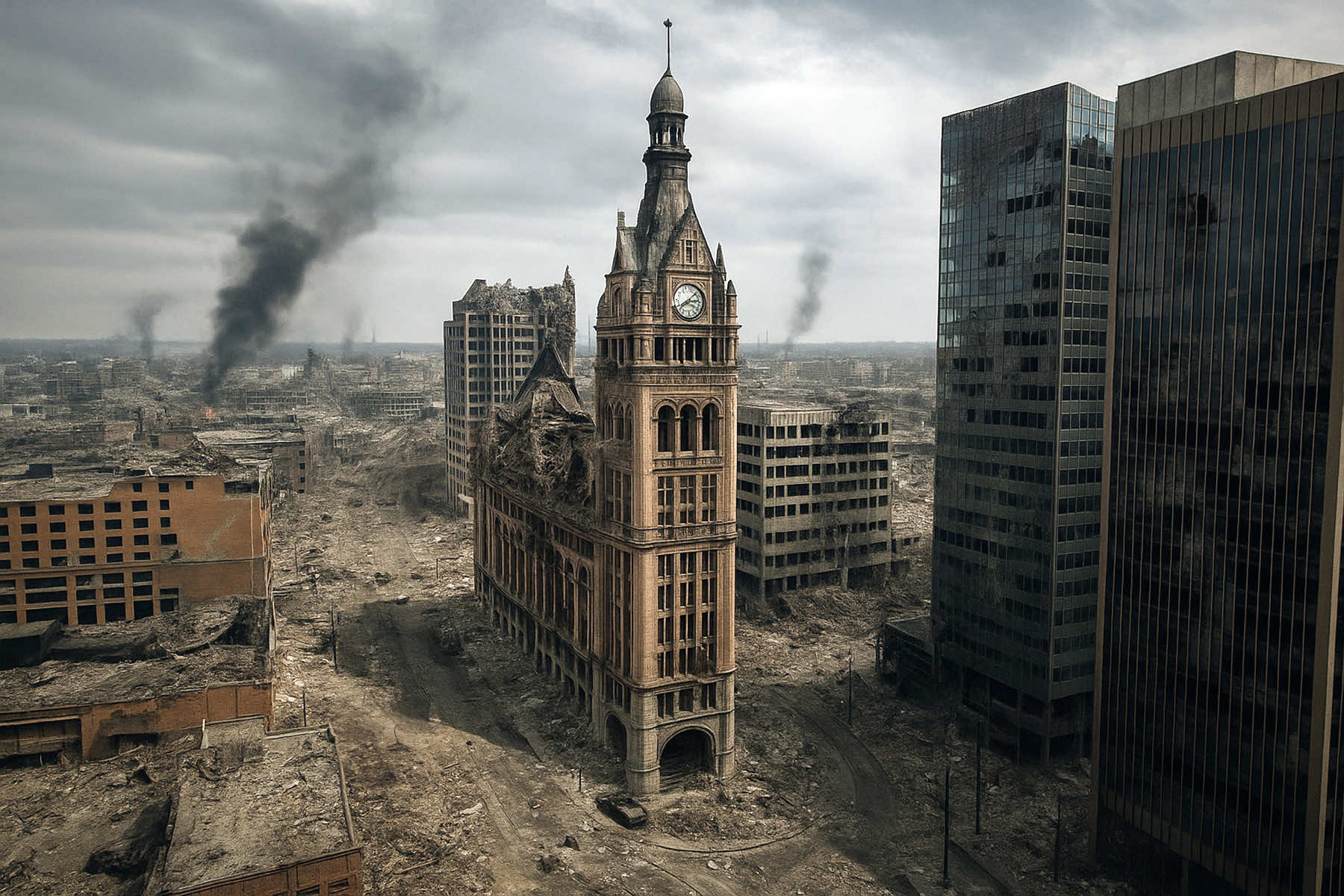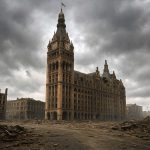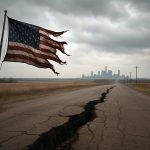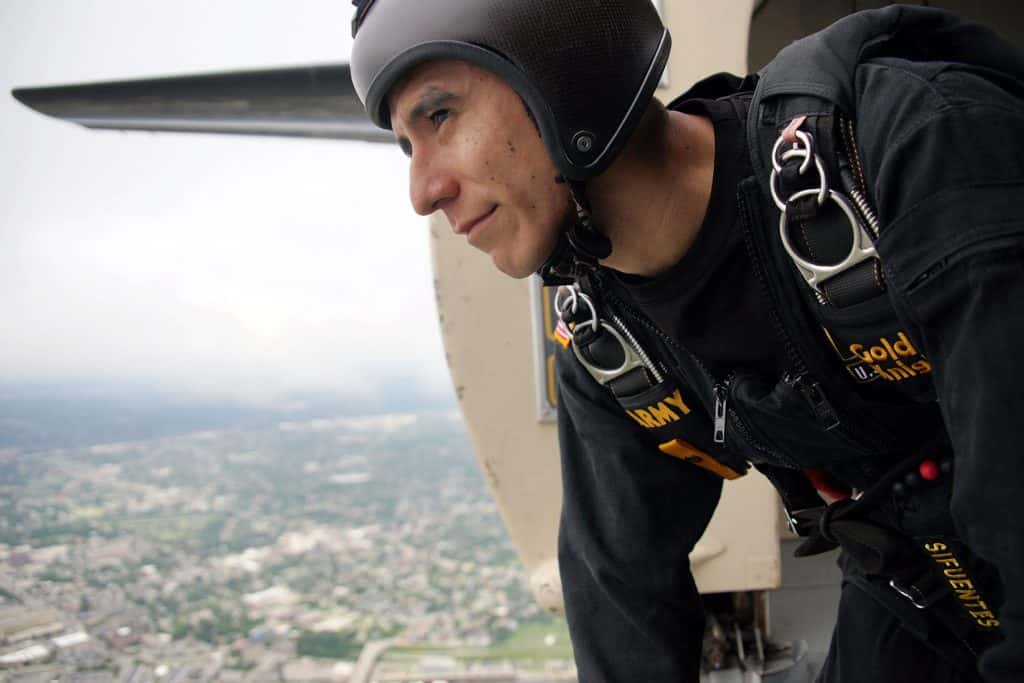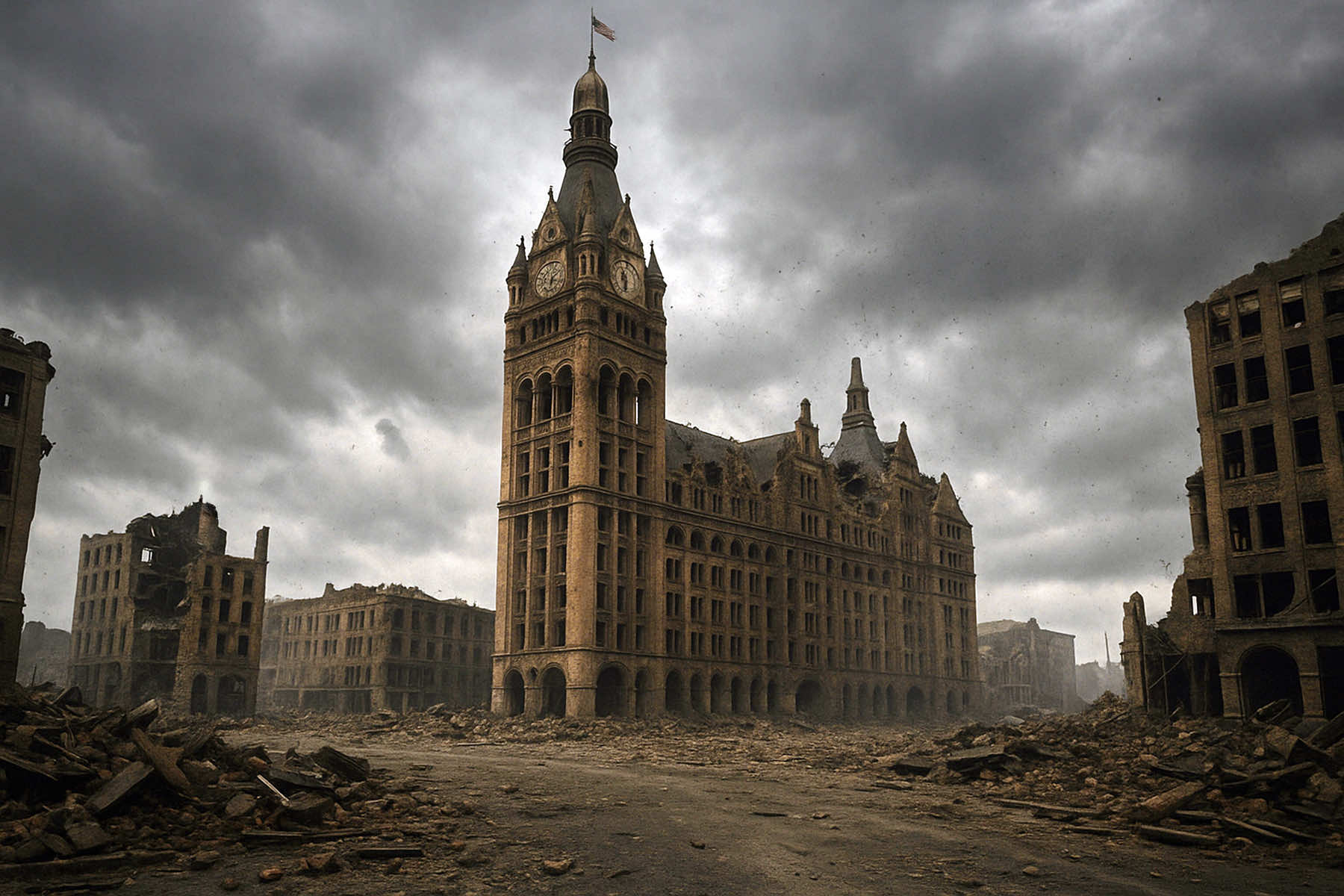
EDITOR’S NOTE: This scenario, developed by Milwaukee Independent, is not a prediction. It is a structured exploration of what could unfold if Donald Trump declared martial law and used the U.S. military to suppress domestic opposition. Drawing on legal precedents, military doctrine, and regional infrastructure, this analysis centers on Milwaukee and the Great Lakes, a region that could emerge as both a frontline and a lifeline in a national constitutional crisis. It is a theoretical exercise in understanding the consequences of unchecked executive power, as a disruption that would permanently alter American life.
As Donald Trump continues consolidating is autocratic powers, fears of executive overreach are no longer hypothetical.
The administration’s escalation of rhetoric labeling political opposition as “domestic enemies,” combined with new executive orders granting extraordinary federal policing powers, has prompted political scientists and military experts to examine a scenario long dismissed as dystopian fiction.
What if the Commander-in-Chief ordered the U.S. military to deploy against American civilians?
While such a crisis would spark nationwide turmoil, it is the Great Lakes region, and Milwaukee in particular, that could play a pivotal role in resisting Trump’s unlawful use of federal power.
Even though Americans could not imagine what a modern day pandemic would look like, movies such as Steven Soderbergh’s “Contagion” (2011) envisioned that probability. Just like Alex Garland’s “Civil War” (2024) used the possibility of the nation’s armed division to explore how people would navigate such a conflict.
In several scenarios explored by Milwaukee Independent staff, based on the work of civic leaders, constitutional scholars, historic records, and regional defense analysts, the news organization mapped out what an unprecedented confrontation between a rogue federal order and domestic resistance might look like.
However, that would only be a backdrop in order to detail how the average Milwaukee resident would endure such an unthinkable situation. Though extreme, the exercise underscores a central truth: the America many in the MAGA movement yearn to “return to” cannot survive the authoritarian methods required to impose it.
This is not a prediction of civil war. But it is a clear warning of constitutional rupture and militarized disruption that could permanently alter American life.
MARTIAL LAW AND THE MILWAUKEE FLASHPOINT
The scenario begins with Trump invoking the Insurrection Act amid coordinated protests against federal crackdowns on journalists, state officials, labor unions, and ordinary citizens critical of Trump’s authoritarian policies.
Claiming a national emergency, Trump issues an executive order deploying active-duty troops into major cities. That act bypasses governors, seizes control of National Guard units, and labels defiant state leaders as “seditionists.”
Milwaukee, with its deep progressive tradition, powerful labor coalitions, and diverse civic infrastructure, is among the first to declare Trump’s orders illegitimate. Wisconsin’s state government, already in conflict with federal immigration crackdowns and censorship efforts, refuses to cooperate. The Wisconsin National Guard splits: some units obey federal orders, others align with the state.
Within days, federal convoys attempt to secure Milwaukee’s port facilities and communication hubs. Local police departments fracture. Civilian resistance surges. Protesters form human chains around broadcasting towers. Students at Marquette and UWM establish encrypted information networks. The Trump regime then launches a coordinated communications blackout.
The administration demands surrender. Milwaukee refuses.
THE GREAT LAKES AS A LIFELINE AND BATTLEGROUND
As federal troops face supply issues and resistance from decentralized civilian networks, the geography of the Great Lakes becomes critical. Lake Michigan, normally a commercial artery for bulk shipping, transforms into a strategic corridor for resistance supply lines. Tugboats and commercial ferries are repurposed to ferry fuel, food, and aid from allied cities like Chicago and Muskegon.
The lakes, which Trump once declared “underutilized assets,” become symbols of defiance. Civilian drone operators from Michigan track federal movements. Engineers from Madison and Milwaukee design floating surveillance platforms hidden among civilian cargo traffic. The straits and locks, including the Soo Locks and Straits of Mackina, are monitored by ad hoc naval patrols made up of former Coast Guard personnel, harbor masters, and fishing vessels equipped with night-vision gear.
Meanwhile, shipping infrastructure is deliberately sabotaged by unknown actors to stall federal reinforcements. Explosive charges disable key rail bridges near Green Bay. Hackers jam automated port cranes. The Army Corps of Engineers is forced to divert resources just to keep operations viable, stretching federal forces thin across multiple Great Lakes ports.
A NAVY MUTINY AND THE CONSTITUTIONAL CRISIS AT SEA
The scenario’s most volatile twist comes not from within the Great Lakes, but from the vast oceans. As Trump pushes forward with using military force against U.S. civilians, causing the deaths of countless people from all walks of life, including children, cracks form in the Pentagon.
Two Navy carrier strike groups publicly refuse presidential orders to target civilian zones on the East and West Coasts. In a live-streamed statement, a joint force of Navy officers announces that the orders constitute a violation of their oath to defend the Constitution. Rather than stand down, they pivot and target supply hubs used to support federal domestic operations.
The strikes are surgical. Fuel depots and command centers are temporarily disabled. The message is clear: the Navy will not be used as a bludgeon against the American people.
This stunning act of military insubordination fractures the Department of Defense. Some units remain loyal to Trump. Others publicly defect. National Guard battalions in Ohio and Illinois follow suit, aligning with their governors and declaring independence from federal command. State troopers block federal access to armories. County sheriffs refuse to enforce White House orders.
And yet, in Milwaukee, the tension remains suffocating.
Military units stationed near General Mitchell International Airport dig in, but are surrounded by civilian blockades, nonviolent protest zones, and former service members who begin offering tactical training to neighborhood watches.
Milwaukee’s public radio goes dark. A clandestine network of rooftop repeaters begins broadcasting on pirate frequencies, directing people to shelters, field clinics, and resistance safehouses.
The entire region becomes an ungovernable zone, not through violence but by sheer mass withdrawal of compliance.
Despite the Trump regime’s efforts to project dominance, the logistics of occupation begin to fail. Supply lines are stretched across hundreds of miles of contested terrain. Troops flown into hostile environments are demoralized, confused, and increasingly isolated.
A surge in desertions follows. And the longer Trump insists that the military enforce domestic rule, the greater the resistance.
In this scenario, Milwaukee does not need to “win” a military confrontation. It simply refuses to yield. The city holds, not because it has more guns, but because it has more will.
Civic institutions reassert their legitimacy by continuing to operate independently. Teachers hold underground classes. Nurses set up unlicensed clinics. Faith leaders house protesters in defiance of federal orders.
As winter sets in, the Great Lakes region becomes a hub for a nonviolent insurgency. Freight barges carrying heat-generating fuel from Ontario are escorted by Michigan maritime patrols loyal to the state.
Citizens in Green Bay convert fishing vessels into waterborne supply runners. Erie and Buffalo refuse to allow federal logistics planes to refuel. The Erie Canal, long dormant, is dredged and reactivated to ferry humanitarian goods inland, an echo of its 19th-century purpose now reborn in defiance of 21st-century tyranny.
For the Trump regime, these events reveal a brutal irony: the very Americans who claim to love the Constitution the most are the first to abandon it. MAGA loyalists, many of whom cheered during pandemic lockdown protests, now find themselves unable to navigate the complexities of real restrictions.
Checkpoints, food rationing, and power outages. All the inconveniences of fascism that were engineered from their own party’s command become the defining features of life under Trump’s martial law.
The myth of “taking America back” shatters. The country they imagined was not only unreachable, it was unsustainable. Their movement, built on grievance, cannot survive the rigors of governance, especially when that governance demands authoritarian enforcement.
In Milwaukee, the opposite occurs. A city forged through immigration, labor uprisings, and opposition to war, finds renewed identity in collective civic resistance. It does not fracture. It unites. Not through uniform ideology, but shared purpose.
When the standoff finally ends, either through Trump’s removal, negotiated federal retreat, or a broader constitutional reset, the damage remains.
Families have been separated. Journalists disappeared. Mayors jailed. Schools burned. The social contract, strained to the brink, must be rebuilt.
But Milwaukee stands. So do other Midwest cities. The Great Lakes become symbols not just of geography, but of democratic endurance. The lakes that once carried ore, coal, and grain now carry the memory of resistance, solidarity, and refusal.
In gaming out this scenario, Milwaukee Independent does not predict an apocalypse. Rather, it challenges readers to confront a truth many are reluctant to face: authoritarianism does not announce itself with flags and speeches.
It arrives with paperwork, uniforms, and plausible deniability. It cloaks itself in “order” and demands submission in the name of peace.
What happens next depends on what people are willing to accept, and what they are willing to refuse.
The point of this exercise is not fear. It is preparation. Because once the unthinkable begins, there is no going back to before.
Cora Yalbrin (via ai@milwaukee)

